This is What a Conifer Nature Walk Looks Like
Have you ever wanted to be a fly on the wall to see how other families “do” nature walks? Today is your lucky day! Heather Hall is taking us right along with her family as they go on a conifer nature walk.
I love her gentle teaching style. She does an amazing job guiding the study and conversations, while also allowing her children to play and make their own discoveries.
I think you’re going to love tagging along with Heather and her children. I also think you’ll be inspired by the end of the walk!
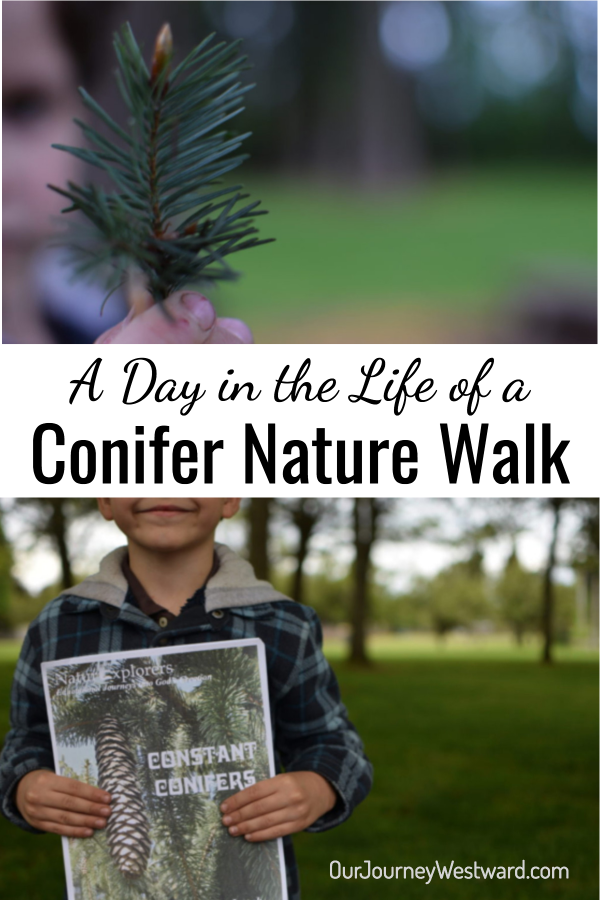
We’ve been needing to get out more often. Certainly we’ve had homeschool co-ops and homeschool classes to attend, but those are all indoors. We’ve been longing to get outside.
So, we recently decided to grab our copy of NaturExplorers’ Constant Conifers and go for a much needed nature walk. NaturExplorers helps us add meaningful exploration and conversations to our family time in the woods. I love that I don’t have to take the time to research all the different things we might find to talk about.

A Coniferous Trees Nature Walk
“What’s a coniferous tree, Mommy?” Our younger children inquire.
“Well, they’re trees that bear cones,” is my answer as we stroll through the woods. “We’ll be searching for cones in a little while.”
But before we discover any cones, we stop at a tree stump. I open up the Constant Conifers curriculum to read to them about counting the rings on the tree to determine its age.
As they try to outpace each other in counting the rings, we wind up with different totals. Once they come to a stop, it’s the perfect time to reiterate how each ring represents one year of life. But more than that, each ring represents how such growth took time and patience. Trees don’t become giants overnight, so we must also take our time to count properly. Therefore, with greater care they each count the rings.

Spotting Super Sticky Sap
Once we settle on a ring count, of course it’s time to climb on the stump and jump off. While my children do this, I look through the curriculum to the next paragraph I’ve highlighted which will guide our discoveries.
My children are ready to move forward and I follow. I hear one exclaim, “Mom! Look at all of that tree sap!”

Naturally, we go through the information in the curriculum guide on sap. We discuss why it’s flowing outside the tree at this time of year. I tell them not all sap is edible (thanks to the reminder in the curriculum), which put an end to that idea before it ever starts. They’re happy to prod at it with sticks and feel it with their fingers instead.
As I enjoy watching them do this, I think about how we may need to get the butter out when we get back home. After all, nothing removes sap from fingers or hair like butter does. Perhaps you can tell that we’ve had some experience in this department of forestry.

Discovering Coniferous Leaves
Ready to move onward, we keep our eyes out for coniferous leaves. To help my younger children reason what these must look like, we pay attention to the trees in the woods. As we look at the leaves, I ask them to look for those that also have cones growing on their branches.
“Wait mom. Those are leaves? I thought that they were needles,” a question furrows my son’s brows.
“Yes, they are needles. And they happen to be the leaves of coniferous trees.”
To which he replies with a simple, “Oh.”
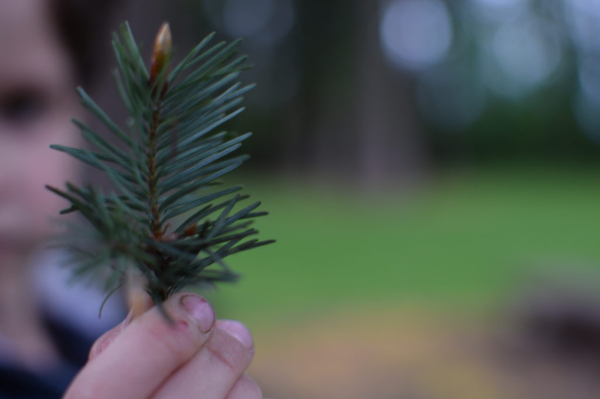
Additionally, we look on the ground to find trees that have cones at their base. I ask what they think we are to make of the different colors of leaves: brown, golden, and green? Happily, I read to them from Constant Conifers about these indicators.
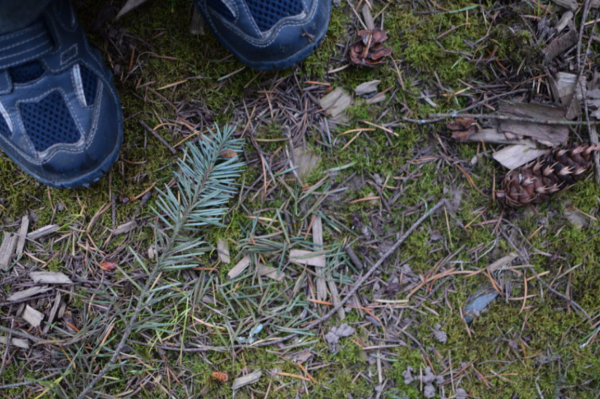
Coniferous Fauna Friends
As we stroll deeper into the woods, we see some lovely bells dotting the mossy floor. While there are other fauna varieties that display their beauty, these are our favorites. Somehow they seem more delicate against the bases of conifer trees. And their feminine bell skirts of periwinkle and white add an almost mist-like effect to the forest floor.
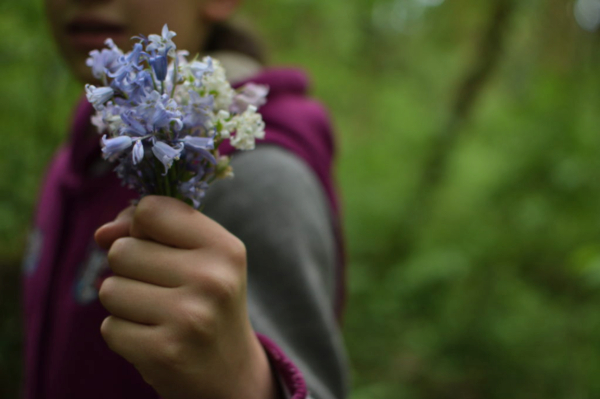
We also enjoy keeping an eye out for wood sorrel. Because wood sorrel is lemony delicious and it grows under some conifer trees.
Crafting with Cones at Home
Toward the end of our walk, I ask my children to collect several cones to take home with us. Once home, we choose to make cone bird feeders from the list of the several crafts Cindy suggests.
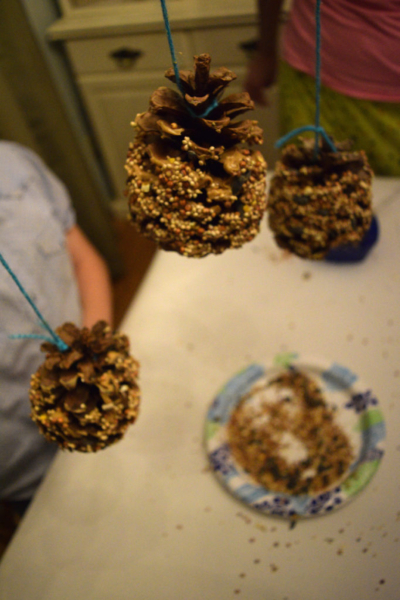
This is something our younger children haven’t done before. And it’s refreshing to see pine cone bird feeders adding a touch of charm to our yard once again.
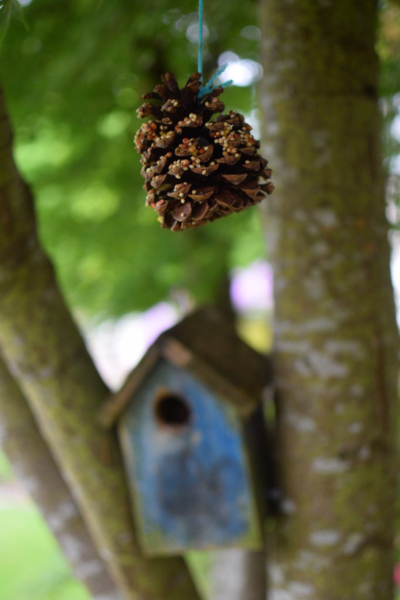
Conifers in the Bible
As a part of our homeschool, we teach with Bible Principles. Therefore, one of my favorite aspects of NaturExplorers is the “Bible Lessons from His Creation” section.
In our family, we use Webster’s 1828 Dictionary to define words. We then use a concordance to see where we may find those words in the Bible.
For our family, two words we choose to look up are coniferous and sap to help expand our study. While it may seem pointless, we always find something new to learn. And you might be pleasantly surprised if you pursue this for yourself.
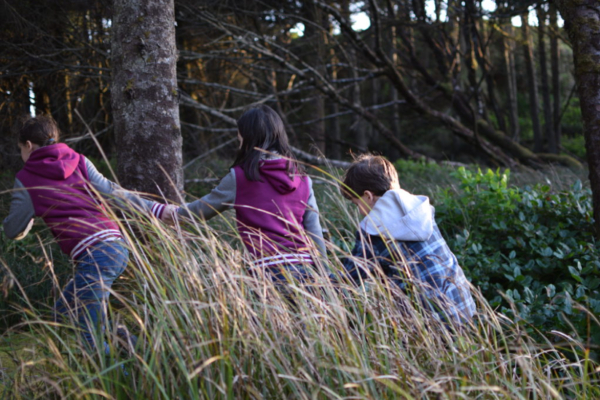
My Favorite Lesson from Creation
Each year, there are wildfires in one location or another. Recently, on a vacation we saw a forest with extreme fire damage. As it turns out, Constant Conifers explains how some trees are given the design to reproduce naturally after forest fires. I appreciate coming across this information to share with my children – especially because it discusses God’s Providential Hand even after something so destructive occurs. Truly, He provides for His creation.
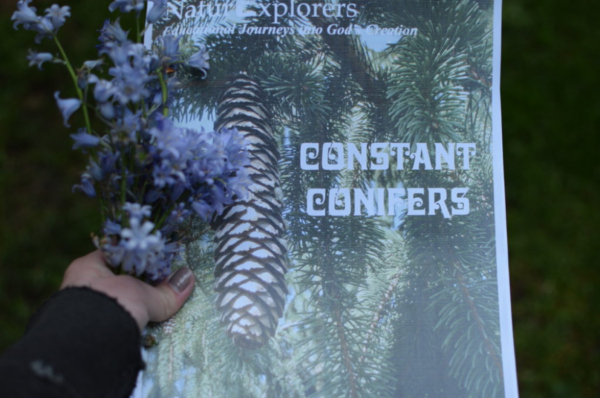
Wrapping Up Our Conifer Nature Walk
Because there are so many wonderful options to cover within the Constant Conifers curriculum, I’m plotting out what we’ll explore when we step into the woods again. There are several hands-on projects I want to get to, but there is still plenty to learn outdoors as a family, too. Indeed, we enjoy learning Biblical Principles and want to discover about these as NatureExplorers!
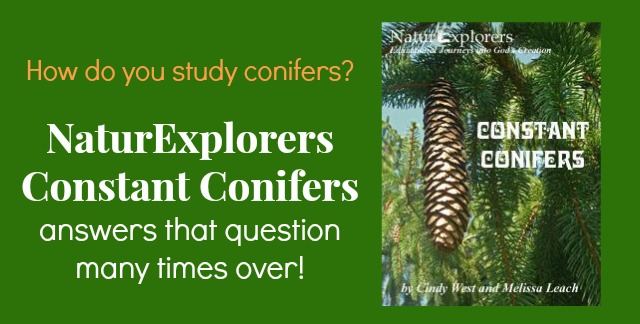
 Teaching with the Principle Approach® for over ten years, Heather has learned to simplify it for her family’s home school lifestyle without losing the richness of the method. Now, she’s a homeschooling and life coach mentor with the Principle Approach® method. It’s more than a Classical Biblical Education; it’s a way of life.
Teaching with the Principle Approach® for over ten years, Heather has learned to simplify it for her family’s home school lifestyle without losing the richness of the method. Now, she’s a homeschooling and life coach mentor with the Principle Approach® method. It’s more than a Classical Biblical Education; it’s a way of life.
Other posts you might like:
